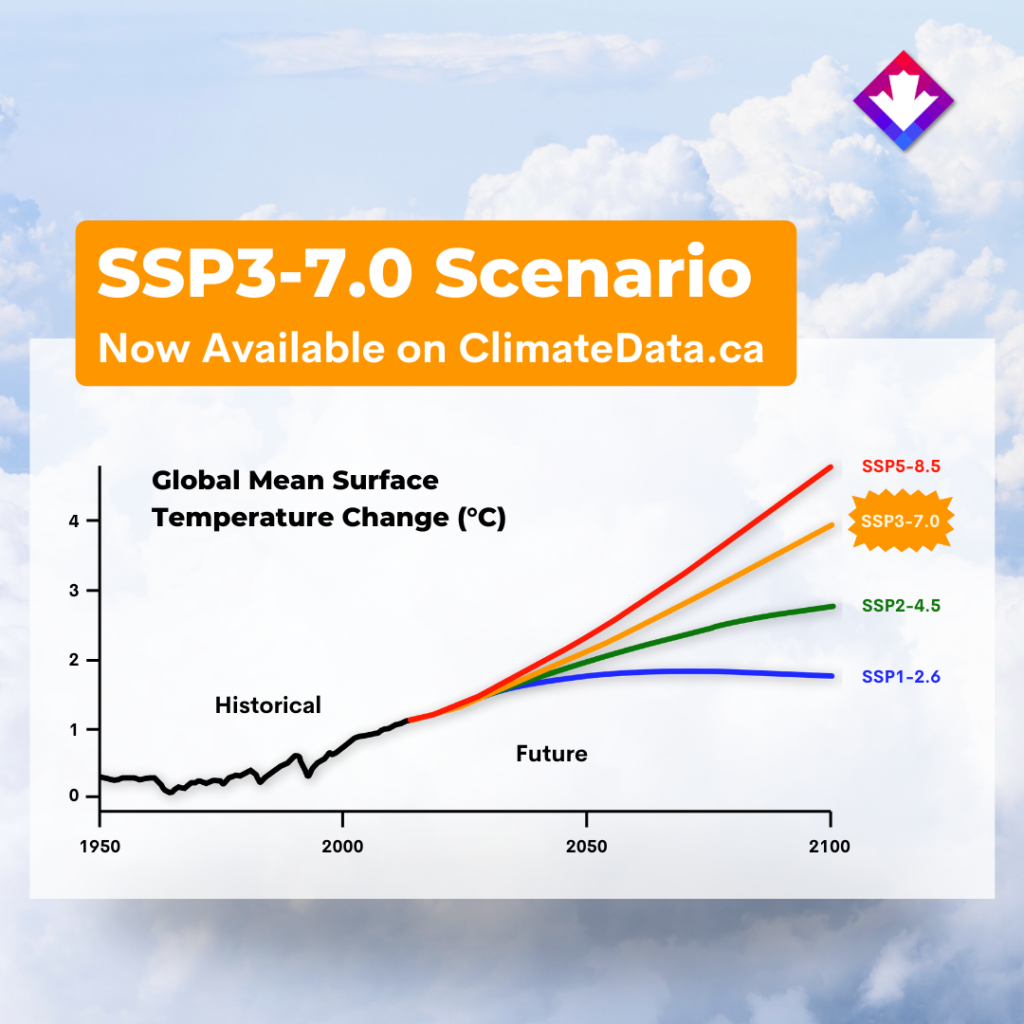Why add another high-emissions scenario?
The availability of both SSP5-8.5 and SSP3-7.0 allows users to select the high-end scenario that best aligns with their specific needs. While questions have been raised in recent years about whether SSP5-8.5 should be considered as a high-end scenario,[1] its strengths in certain applications are widely recognized, such as providing a higher signal-to-noise ratio, which makes climate change signals more distinguishable from natural variability and offering an analogue for post-2100 climates that could inform projects with long design service lives. SSP3-7.0, meanwhile, has received increased attention in recent years, with some considering it a more plausible high-emissions pathway for this century. It should be noted, however, that SSP3-7.0 includes higher aerosol emissions compared to the other scenarios available on ClimateData.ca, which may affect local precipitation projections. While there is no definitive “right” or “wrong” choice in scenario selection, the addition of SSP3-7.0 provides another option for assessing climate change risks and informing adaptation plans and actions.
It is important to note that the ensemble of climate models available for the SSP3-7.0 scenario only includes 24 out of the 26 models used for the other three emissions scenarios. Model output from the remaining two models (HadGEM3-GC31-LL and KIOST-ESM) were not available when downscaling was undertaken.
Rollout and Future Availability
- Interactive Map: The SSP3-7.0 scenario is now accessible within ClimateData.ca’s map page for most variables. Some variables, including Humidex and SPEI projections, will be updated later to include SSP3-7.0.
- Download and Analyze Pages: SSP3-7.0 is also integrated into the download and analyze pages, enabling users to incorporate it into custom analyses.
- Future Plans for App Integration: The ClimateData.ca team is currently evaluating whether to add SSP3-7.0 into its applications, including the fire weather projections and spatial analogue tools.
For more information about SSPs or using these data in climate risk assessments, explore the Understanding Shared Socio-economic Pathways (SSPs) article on ClimateData.ca or contact the Climate Services Support Desk for support.
References
[1] Shiogama, H., Fujimori, S., Hasegawa, T. et al. Important distinctiveness of SSP3–7.0 for use in impact assessments. Nat. Clim. Chang. 13, 1276–1278 (2023). https://doi.org/10.1038/s41558-023-01883-2

